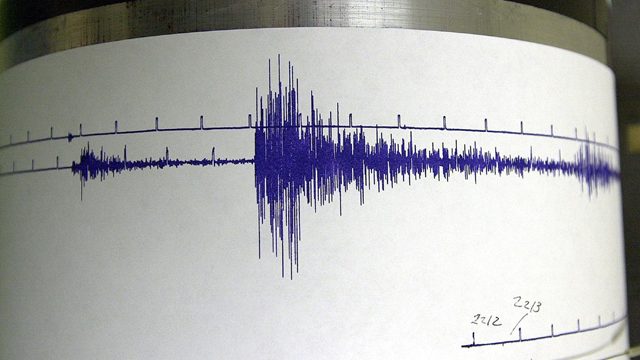In early April researchers from NOAA announced they had re-discovered the sunken remains of the World War II aircraft carrier USS Independence lying near the Farallones Islands, 30 miles off San Francisco. It was a significant find as the ship’s list of war-time accomplishments was as long as an arm; first carrier outfitted to launch planes at night, survivor of a crippling torpedo attack, helped pound positions in Okinawa to help end the war and finally brought her crew safely home at the war’s end.
The ship’s post-war resume wasn’t quite as glorious; the military used it as a target for atom bomb tests, employed her in the Bay Area as a floating radiation laboratory for sailors, then hauled her out near the Farallones Islands, and intentionally sunk her.
The search for the ship’s remains landed in the sights of NOAA researchers James Delgado and Robert Schwemmer who’ve made it a mission to locate and photograph many of the estimated three-hundred sunken ships lying along the Northern Coastline in Federal waters. They used a special Boeing autonomous underwater vehicle to sweep the sea floor close to where Navy records showed the sunken ship, using sonar to locate the ship’s hulking corpse. The images showed the ship languishing in her grave—silt and sea creatures had mostly swallowed her 623 foot frame—yet the 3D sonar images were unmistakable. This was the ship.
“We have found it to be amazingly intact sitting upright on the bottom almost as if ready to launch her planes,” Delgado said.
For the ship’s still-living crew members, most of whom are now in their nineties, the discovery raised to the surface a wage of nostalgia. In the East Bay city of Dublin, eighty-eight-year-old USS Independence veteran Philip Wire was thrilled to hear mention of his former ship in news reports.
“It’s nice that you hear that your ship is in the limelight,” Wire said, hunched over his dining room table, picking through old photos.
Wire dug out his military photo album, filled with pictures he’d taken, even though photo taking was against regulations, during his service on the ship from February of 1945 to April of 1946. There were shots of his crew mates swimming off an island in the South Pacific during a brief six-hour respite from the war.
“You got two bottles of Pepsi and one can of beer… warm,” Wire laughed. “You could swim in the nice warm water.”
Other photos showed crew members mugging dockside in front of the massive ship during a fuel run in Saipan — or in front of one of the ship’s planes on the carrier’s vast runway. What the photos didn’t convey, were the harrowing air battles with kamikaze fighters bearing down on nearly helpless maritime targets, or the sound of bullets and explosions whizzing in all directions.
“Every ship there is firing their weapons,” Wire said of the battles, “and the whole area smells like sulphur.”
The Independence was built for speed. Her duty, Wire said, was to travel fast and get her planes as close to the enemy as possible. The ship was the first carrier outfitted to operate at night--launching planes in the wee hours of the morning, timed to bomb targets in Okinawa and Japan at dawn. The ship, known affectionately as “The Mighty I,” lit up bright when the planes would launch.
Local
“You’ve seen Las Vegas from an airplane at night time,” Wire said. “That’s what it looked like and the enemy could see it too.”
Wire was 17-and-a-half when he went off to war—taking a position in the Independence’s gunnery division. He hadn’t even graduated from high school. His mother saved newspapers every time the Independence was mentioned. Wire flipped through the stack of yellowed papers, settling on a headline reading “Japan Surrenders.” He vividly recalled that night when news of the surrender circulated to the ship. He was at his post, where he would feed bullets to one of the carrier’s 40 caliber guns.
“I ran down to tell the guys who were sleeping 'the war was over,'” Wire said. “And i got hell just because i woke them up.”
Wire fell quiet as he talked about the Navy’s intentional sinking of the ship in 1956. He thought the Mighty I should’ve been turned into a floating museum, like the USS Hornet. He had an affinity for the ship, he said, because she had carried him and his crew mates home safely.
“A lot of guys always said ‘I’m sad I’m in the Navy,' but none of them would let you talk about the Independence bad” Wire said, “it really did its job.”



